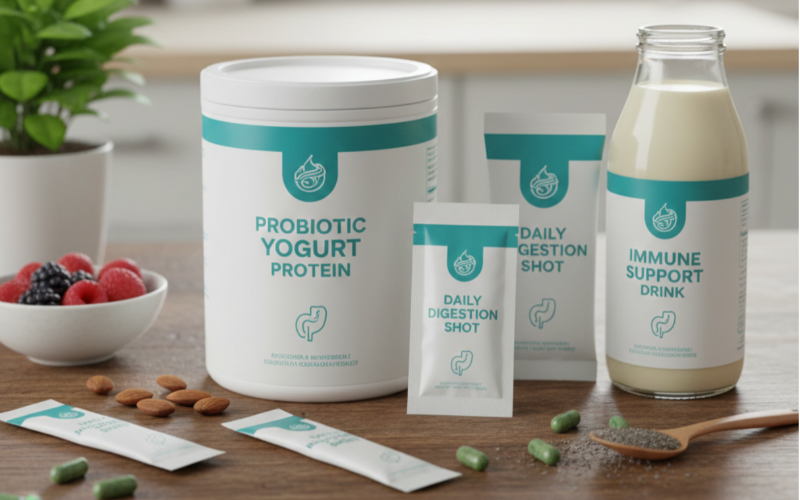USDA Launches National Milk Testing Strategy to Address H5N1 in Dairy Herds
Sourse: DairyNews.today
The U.S. Department of Agriculture (USDA) announced the initiation of its National Milk Testing Strategy (NMTS) as part of a comprehensive effort to combat the spread of highly pathogenic avian influenza (HPAI) H5N1 in dairy cattle.

The strategy builds on measures implemented since the first detection of the virus in March 2024, introducing a Federal Order requiring nationwide collection and testing of raw milk samples.
“This milk testing strategy is a pivotal step in protecting the health of our dairy herds and the safety of our milk supply,” said Agriculture Secretary Tom Vilsack. “It provides farmers and farmworkers with the confidence to safeguard their livestock while equipping us with the tools to control and eliminate the virus.”
The NMTS is designed to enhance surveillance by identifying affected states and herds, implementing biosecurity measures to curb transmission, and informing strategies to protect farmworkers. The strategy aims to establish baselines for greenhouse gas emissions and build a framework for ensuring a safe and sustainable dairy sector.
Federal Order to Enforce Milk Testing
The Federal Order, effective immediately, mandates:
Sharing Raw Milk Samples: Entities responsible for dairy farms, transporters, or processing facilities must provide raw milk samples upon request.
Epidemiological Reporting: Herd owners with positive cases must supply contact tracing and surveillance data.
Mandatory Reporting: State veterinarians and private labs must report positive test results to the USDA.
Testing under the Federal Order and NMTS will begin the week of December 16, 2024, with six states—California, Colorado, Michigan, Mississippi, Oregon, and Pennsylvania—included in the initial rollout.
Five-Stage Plan for Disease Monitoring
The NMTS introduces a structured, five-stage approach to monitor and mitigate H5N1 in dairy herds:
Health and Human Services (HHS) Secretary Xavier Becerra highlighted the program’s public health impact, emphasizing the importance of ensuring the safety of pasteurized milk and dairy products. “This partnership reflects our commitment to the health of individuals and communities and the safety of the national food supply,” he said.
USDA is working closely with state animal health officials to tailor testing protocols, conduct webinars, and provide resources to facilitate compliance with the NMTS. The strategy also complements existing USDA efforts, such as pre-movement testing and financial support programs for biosecurity enhancements.
Long-Term Goals and Research
USDA’s efforts extend to research on H5N1’s origins and mitigation strategies. Collaborative studies with the Food and Drug Administration (FDA) have reaffirmed the safety of pasteurized milk and dairy products and the effectiveness of proper cooking techniques for beef.
“By combining USDA's expertise with state and federal partnerships, we aim to eliminate H5N1 from U.S. dairy herds and safeguard both animal health and food safety,” said Vilsack.
For further information on USDA’s response and NMTS rollout, visit the USDA HPAI Livestock website.
“This milk testing strategy is a pivotal step in protecting the health of our dairy herds and the safety of our milk supply,” said Agriculture Secretary Tom Vilsack. “It provides farmers and farmworkers with the confidence to safeguard their livestock while equipping us with the tools to control and eliminate the virus.”
The NMTS is designed to enhance surveillance by identifying affected states and herds, implementing biosecurity measures to curb transmission, and informing strategies to protect farmworkers. The strategy aims to establish baselines for greenhouse gas emissions and build a framework for ensuring a safe and sustainable dairy sector.
Federal Order to Enforce Milk Testing
The Federal Order, effective immediately, mandates:
Sharing Raw Milk Samples: Entities responsible for dairy farms, transporters, or processing facilities must provide raw milk samples upon request.
Epidemiological Reporting: Herd owners with positive cases must supply contact tracing and surveillance data.
Mandatory Reporting: State veterinarians and private labs must report positive test results to the USDA.
Testing under the Federal Order and NMTS will begin the week of December 16, 2024, with six states—California, Colorado, Michigan, Mississippi, Oregon, and Pennsylvania—included in the initial rollout.
Five-Stage Plan for Disease Monitoring
The NMTS introduces a structured, five-stage approach to monitor and mitigate H5N1 in dairy herds:
- Silo Monitoring: Nationwide testing of milk silos at processing facilities to detect disease prevalence.
- Bulk Tank Sampling: Collaboration with states to identify infected herds through targeted testing.
- Enhanced Response: Implementation of biosecurity measures, movement controls, and contact tracing in affected states.
- Disease-Free Monitoring: Regular testing in states free of H5N1 to confirm continued safety.
- National Freedom from H5N1: Long-term sampling to demonstrate eradication across the U.S.
Health and Human Services (HHS) Secretary Xavier Becerra highlighted the program’s public health impact, emphasizing the importance of ensuring the safety of pasteurized milk and dairy products. “This partnership reflects our commitment to the health of individuals and communities and the safety of the national food supply,” he said.
USDA is working closely with state animal health officials to tailor testing protocols, conduct webinars, and provide resources to facilitate compliance with the NMTS. The strategy also complements existing USDA efforts, such as pre-movement testing and financial support programs for biosecurity enhancements.
Long-Term Goals and Research
USDA’s efforts extend to research on H5N1’s origins and mitigation strategies. Collaborative studies with the Food and Drug Administration (FDA) have reaffirmed the safety of pasteurized milk and dairy products and the effectiveness of proper cooking techniques for beef.
“By combining USDA's expertise with state and federal partnerships, we aim to eliminate H5N1 from U.S. dairy herds and safeguard both animal health and food safety,” said Vilsack.
For further information on USDA’s response and NMTS rollout, visit the USDA HPAI Livestock website.












